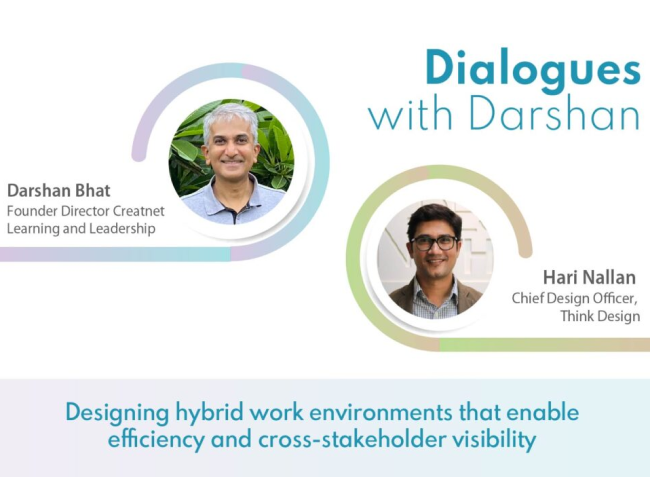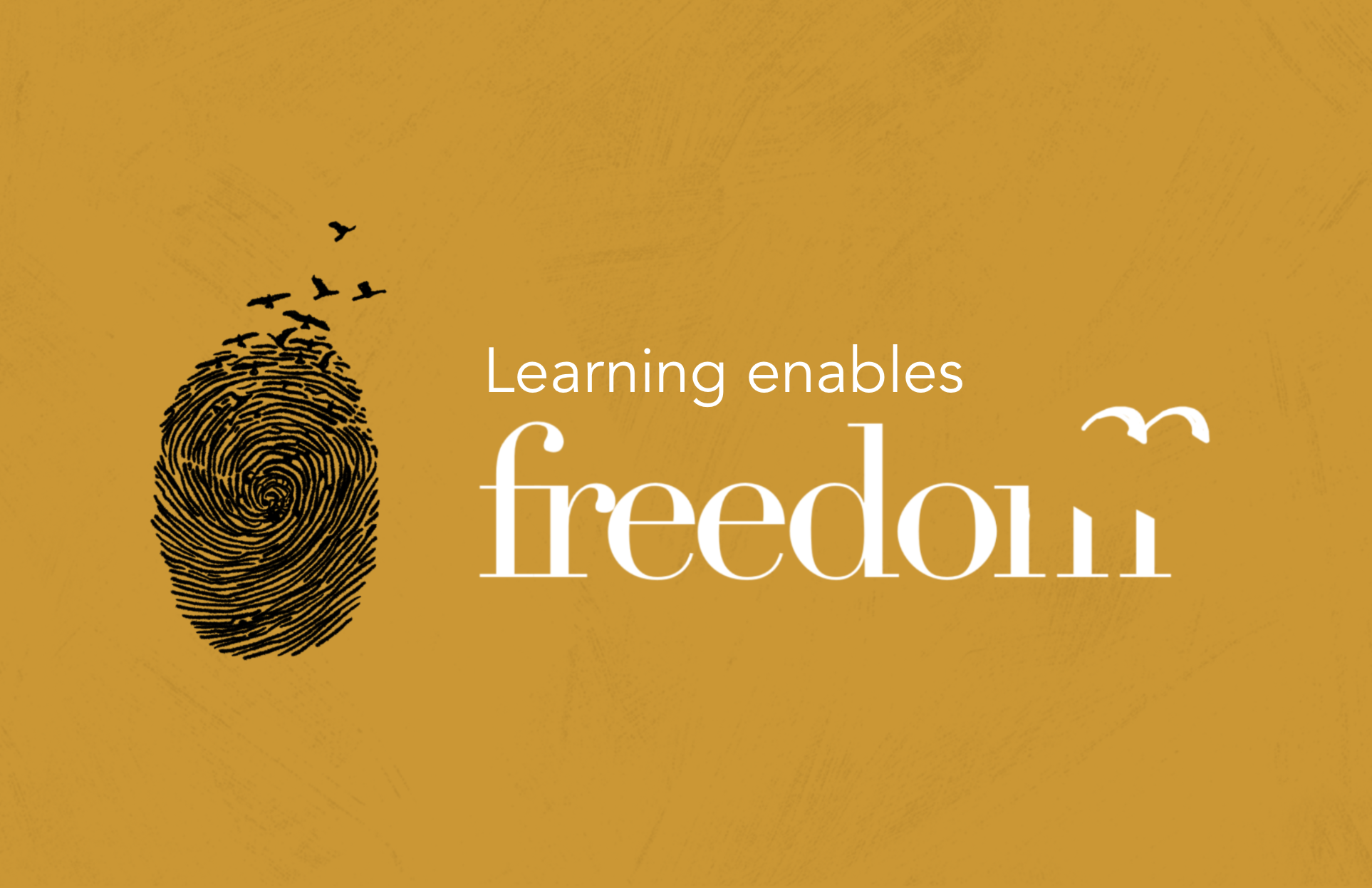Our Blog
Designing hybrid work environments that enable efficiency and cross-stakeholder visibility

Highlights:
- Need for redesigning work environments in recent times : In 2020, many businesses have had to step up, reevaluate and change their operations by embracing the need of the hour. Organisations and their leaders that have openly embraced the new normal and redesigned work environments, if didn’t experience a positive growth then didn’t feel a decline either.
- Think Design as an organisation : UX strategy firm headquartered in Delhi with offices across the globe. Hari Nallan, Founder, Chief Design Officer and CEO of Think Design made us aware of how he, along with his colleagues, came up with the name for his organisation which underlines the interdependencies between reflection and action.
- Mental models around ‘work from home’ going forward : The rise in the number of Covid cases brought the importance of changing the way we work to the forefront. Research suggests that in the US, 52% of employees said they would like their organisation to adopt more flexible hybrid work models and work (McKinsey). Whereas in India, around 95% organisations plan to stick with remote working for the coming two years.
- Think Design research on ‘work from home’ model of operation : Think Design conducted research of their own in 5 to 6 countries during the ‘Intern from home’ initiative to gain insight on the ‘work from home’ model.
- ‘Design Rooms’: a concept devised by Think Design that can be refined and applied to any organisation irrespective of size or industry : Design Rooms are virtual rooms/ spaces where team members gather to align, plan, brainstorm, work and design collaboratively for the entire duration of a project work day at a stretch. Design rooms also enable cross stakeholder visibility which has posed a challenge in itself in current times.
Organisations might have looked at redesigning the workplace to increase productivity among their employees in the past. But, recent times have made reviewing work environments for productivity a norm due to reasons beyond our control. What’s more noteworthy is that this exercise hasn’t been easy to implement across all types of businesses. Research shows that in India the workforce could spend 12% of its time working remotely without losing effectiveness. But, a vast majority of India’s workforce of 464 million is employed in occupations such as retail and agriculture which pose a challenge to remote businesses (McKinsey).
In 2020, many businesses have had to step up, reevaluate and change their operations by embracing the need of the hour. One such well known giant, Tata Consultancy Services (TCS) decided to follow the work from home model as soon as the pandemic started to spread. They further adopted a hybrid work model, where a large number of their people continue to work from home. As of September 2021, 97% of TCS employees continue to work remotely.
“The future of work will be somewhat hybrid where some people will work from home, sometimes people will come to the office. So, the hybrid will likely be the new normal,” says the Chairman of the TCS, Natarajan Chandrasekaran.
With the significant transition of office spaces from physical to virtual, other social and operational components connected with workspaces such as meetings, management practices, lunchroom chit chat, etc., also experienced a massive overhaul. And, with all the above dimensions mindfully integrated in a holistic way, businesses were able to maximize productivity.
Organisations and their leaders that have openly embraced the new normal and redesigned work environments, if didn’t experience a positive growth then didn’t feel a decline either.
We spoke to Hari Nallan, Founder, Chief Design Officer and CEO of Think Design – an award winning UX strategy firm headquartered in Delhi with offices across the globe. Hari made us aware of how he, along with his colleagues, came up with the name for his organisation which underlines the interdependencies between reflection and action.
The name Think Design came about as a response to questions such as:
Are thinking and doing (designing) mutually exclusive?
Hari believes thinking is a big part of working – one is constantly one with their thoughts. This outlook is what continues to keep Think Design relevant across all industries.
Our dialogue with Hari gave us a deeper understanding on how he and Think Design have practised agility to change even before the pandemic. For instance, Think Design’s website, a platform for generating leads, is one of their most powerful marketing tools. Hari considered the website as a brand building platform that could offer much more. This shift in Hari’s thought process was brought about during his journey as a marketer. Hari’s journey as founder and CEO of a reputed design firm began with OMP (Owner Management Program now known as Entrepreneurship Program by Creatnet). The program enabled Hari to see clients as organisations and not individuals. Today, Think Design receives requests from other organisations to showcase their products on their website. Clearly, Think Design has consistently adapted and innovated in times of change. And, 2020 has been no different.
In 2020, everyone was compelled to work from home. The rise in the number of Covid cases brought the importance of changing the way we work to the forefront. The new remote/work from home model came with it’s issues and challenges for employees as well as employers alike; Yet, it looks like most businesses may choose to continue operating remotely even if an opportunity of going to a physical workspace develops. Research suggests that in the US, 52% of employees said they would like their organisation to adopt more flexible hybrid work models and work (McKinsey). Whereas in India, around 95% organisations plan to stick with remote working for the coming two years.
Think Design conducted research of their own in 5 to 6 countries during the ‘Intern from home’ initiative to gain insight on the ‘work from home’ model. Surveys were conducted and the results were assessed to find answers to questions such as: Is work from home sustainable? What are the expectations in terms of work etiquette? How does it affect productivity?
Is work from home sustainable? What are the expectations in terms of work etiquette? How does it affect productivity?
Articulating some key insights from this research, Hari mentions that some women find the ‘work from home’ model safe. As they can avoid unsafe commuting or working in an environment they might not feel safe in. As far as productivity and efficiency goes, it hasn’t been easy to measure because communication has taken more time and been exhausting during the lockdown. This research concludes that even though the ‘work from home’ model is preferred by many, it cannot be considered as the only way of working going forward.
Additionally, adoption of certain professional etiquettes, such as respecting boundaries and not taking team members for granted by assuming availability to jump on ad-hoc meetings or calls, will go a long way in building team camaraderie which further impacts efficiency at work. Organisations need to give space to their teams to check in and check out.
Finally, digital interactions have also impacted the existing work culture and sense of psychological safety or belonging for individuals. Teams and managers have had to devise new systems of communication to reinforce a positive, motivating, collaborative and productive work culture. Again, appeasing the concerns of clients and keeping the clients in the loop on a project’s progress isn’t too far behind on the agenda. A few insightful emergences from our dialogue with Hari were that organisations need to redesign orientation as well as induction of new joinees and encourage cross-pollination between teams to continuously cultivate empathy and team spirit among colleagues. Similarly, a systemic redesign of digital meetings can enable transparent and effective delivery of work to the clients.
Hari adds that the learnings during the pandemic have enabled Think Design to formalise new work etiquette that has helped them get better organised and improve on cross-stakeholder visibility. He affirms that the quality of work at Think Design improved manifold during this time as well. Hari specifically spoke about the concept of ‘Design Rooms’. Design Rooms are virtual rooms/ spaces where team members gather to align, plan, brainstorm, work and design collaboratively for the entire duration of a project work day at a stretch. This means that a design room is active for 6-8 hours a day and the web url to join the design room is made available to the managers as well as clients. Both, the manager and the client can enter the room at any time while it’s active for updates or to give feedback on the work done. So, where several additional meetings were required for gathering feedback and consensus on a project, one live virtual room added tremendous value and broke the notion of conventional meetings. Additionally, status updates and keeping the customer informed were also accomplished with this new model of collaboration. It has been difficult to adopt design rooms because designers are creative loners and tend to have their own process to design, says Hari. However, Think Design has successfully made systemic changes to the design process and made significant headway in accepting and mitigating the challenges presented by remote work.
Most industries are facing similar challenges due to the unexpected times we live in. The astute learnings from this event can be refined and applied to all organisations alike. As office centric culture moves towards flexible ways of working, there is no one right way of working in these unprecedented times. Reviews and changes to operations, systems and processes may help organisations understand what works best for them. The need to learn, evolve & reexamine ways of and behaviours at work has probably never been this imperative. We’ve been given a golden opportunity to determine what we value and make a choice to either continue with our current systems or redefine work environments that allows us to thrive in the face of adversity.
About this Article:
This article is the emergence we experienced in our event Dialogues with Darshan. In this event we hosted Hari Nallan Founder , CEO & Chief Design Officer at Think Design. We explored designing hybrid work environments that enable efficiency and innovative ways in which we can work together digitally.
Suggested Blogs

Action Committees: A Micro Paper
What is an action committee? An action committee is a group of people within a department or different departments who work together temporarily (for a stipulated period of time or…
Learning Enables Freedom - Independence Day, August 15th Event
On this Independence Day, August 15th, as we approach our 75th year of independence, leaders from organisations, non-profit institutes, government school systems, and youth leaders from our Youth Leaders Program…


